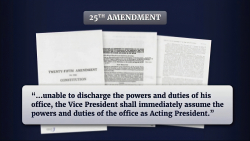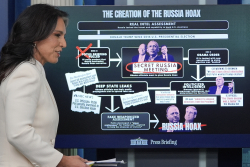After claiming he could end the war in Ukraine within 24 hours in office, President Donald Trump is no closer to achieving peace.
Initially, Trump’s efforts were focused on bringing Ukrainian president Volodymyr Zelensky to the negotiating table. In late February, Trump hosted Zelensky in a fiery press conference in the Oval Office, in which he berated the Ukrainian president and doubted his readiness to make peace. Soon after, Trump froze US military aid to Ukraine to force the Ukrainian President to the table.
Talks followed in Saudi Arabia, with Ukraine accepting a limited 30-day ceasefire on March 11. However, in a March 18 call, Russian president Vladimir Putin agreed not to target Ukraine’s energy infrastructure but refused Trump’s proposal for a thirty-day ceasefire. Progress stalled, with Trump lashing out at Zelensky for prolonging the “killing field” on April 23 by refusing to surrender Russian-annexed Crimea. The next day, Trump gave his first rebuke of Putin, following a large Russian missile attack on Kyiv.
Since April, Trump’s frustration with Putin has mounted. Following the Kremlin’s escalation of missile and drone attacks, Trump gave Putin a 50-day ultimatum beginning on July 14 to conclude a peace deal or else face US tariffs.
Now, President Donald Trump has once again moved his deadline for Vladimir Putin to begin peace talks on Ukraine, this time to just 10–12 days. But with no diplomatic breakthrough in sight and repeated Russian missile strikes undercutting diplomatic overtures, what might happen if Putin ignores this latest ultimatum? Could extreme tariffs or indirect pressure on other countries make a difference? And what might the war’s trajectory look like if neither side is willing or able to negotiate?
In this episode of Three Questions, CFTNI president Paul Saunders discusses President Trump’s newly reduced deadline for ending the war in Ukraine. Why did Trump reduce the deadline? When Trump’s newly shortened deadline expires, what will happen? What is the trajectory of the war if Trump’s deadline elapses and the fighting continues, and the United States continues supplying weapons and intelligence support?
About the Speaker: Paul Saunders
Paul J. Saunders is President of the Center for the National Interest and a member of its board of directors. He is also Publisher of The National Interest. His expertise spans US foreign and security policy, energy security and climate change, US-Russia relations and Russian foreign policy, and US relations with Japan and South Korea. Saunders is a Senior Advisor at the Energy Innovation Reform Project, where he served as President from 2019 to 2024. He has been a member of EIRP’s board of directors since 2013 and served as chairman from 2014 to 2019. At EIRP, Saunders has focused on the collision between great power competition and the energy transition, including such issues as energy security, energy technology competition, and climate policy in a divided world. In this context, he has engaged deeply in energy and climate issues in the Indo-Pacific region, especially US relations with Japan and South Korea. His most recent project at EIRP is an assessment of Russia’s evolving role in the global energy system.
Image: Brian Jason / Shutterstock.com.















